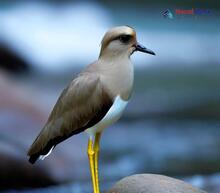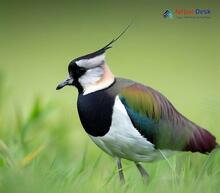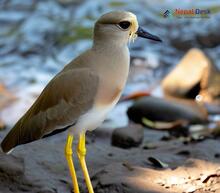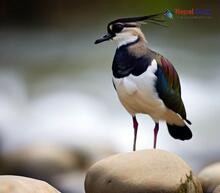The majestic mountains and vast landscapes of Nepal are home to an incredibly diverse ecosystem. Among the many fascinating native species found in Nepal, the Vanellinae bird subfamily stands out as one of the most remarkable and captivating treasures. Soaring through the skies and strutting on the ground, these unique birds offer both beauty and idiosyncrasy to the rich Nepalese wildlife.
Characteristics of Vanellinae Birds
The Vanellinae subfamily is comprised of various species commonly referred to as lapwings, plovers, and dotterels. Displaying striking features that set them apart from other avian species, these birds boast a distinct plumage marked by vivid patterns and colors. They possess long legs and large eyes, enhancing their ability to scout for food on the ground.
Habitat and Distribution in Nepal
Nepal's diverse landscape offers a perfect environment for Vanellinae birds to thrive. Most species can be found inhabiting wetlands, grasslands, lakeshores, riverbanks, forests, and agricultural lands throughout the country. Some popular destinations for birdwatchers hoping to catch a glimpse include Chitwan National Park, Koshi Tappu Wildlife Reserve, and Phulchoki Mountain.
Roles in Ecosystem
Not only do Vanellinae birds add splendor to Nepal's natural beauty, but they also play an essential role in maintaining a balanced ecosystem. Primarily insectivores, these birds control local insect populations while simultaneously serving as food sources for larger predatory creatures such as snakes and various mammals.
Conservation Initiatives in Nepal
Recognizing the importance of maintaining biodiversity, multiple conservation efforts are underway in Nepal to protect precious avifauna like Vanellinae birds. Integral organizations like Bird Conservation Nepal (BCN) work tirelessly to educate communities on the significance of conserving habitats, combat illegal poaching activities, and contribute to the reforestation of degraded lands.
Final Thoughts
The Vanellinae bird subfamily is an enchanting element of Nepal's thriving ecosystem. Their striking appearance, behavioral patterns, and ecological significance make these birds a true feathered treasure in the South Asian region. By taking part in conservation initiatives and promoting sustainable eco-tourism practices, we can help protect these magnificent creatures and ensure that they continue to embellish Nepal's landscapes for generations to come.





